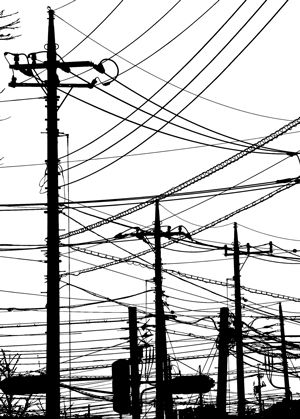By: John Shepler
Have you been relying on a T1 line for a long time? It’s understandable, given their long history. When the Internet was new, a T1 line provided businesses with a dependable, high-bandwidth connection that made dial-up modems seem incredibly slow. These days, similar bandwidth options are available at comparable prices, making those old T1 lines appear slow in comparison. So, are T1 lines still a viable business solution, or are they outdated?
Bell Labs developed T1 lines to improve the telephone industry. The goal was to use two digital lines to carry multiple phone calls instead of 24 analog lines. This offered two main benefits: it reduced the need for copper wiring and minimized background noise, especially for long-distance calls. If you recall the transition from analog to digital long-distance calls, you might remember how surprisingly clear conversations became without the usual hissing and interference.
T1 lines found another purpose when businesses began using them for internet access. Devices at each end of the connection translated between synchronized phone channels and internet data packets. For businesses, this meant having a reliable, always-on internet connection with a speed of 1.5 Mbps, which was considered fast in the late 1990s and early 2000s.
A variation of T1 lines, called ISDN PRI, still used T1 technology to connect multiple phone lines to corporate phone systems. T1 has been a fundamental part of phone and fax communication for businesses ever since.
Why T1 Lines Are Becoming Outdated
Two main factors are causing T1 lines to become obsolete. Firstly, businesses now need much faster internet speeds. While you could combine multiple T1 lines to increase bandwidth, this approach is not cost-effective – three T1 lines cost three times as much as one – and it’s challenging to exceed speeds of 10 Mbps.
Today, businesses need hundreds of Mbps or even 1 to 100 Gbps to handle cloud-based services effectively. This shift requires fiber optic lines instead of copper-based T1 lines. T1 is now mainly used for limited business applications like credit card processing, security systems, multi-line phone systems, and email. However, even for these applications, fixed wireless access and fiber optic services are becoming increasingly available and affordable, making T1 less appealing.
Secondly, telephone companies that own the copper infrastructure needed for T1 lines are replacing copper with fiber optic cables. They are choosing to phase out their copper networks. In some major cities, copper lines are being removed to make way for fiber optic cables.
Furthermore, even smaller businesses are moving away from outdated telephone company technologies like DSL and T1, opting for affordable broadband and phone services from cable providers. Modern cable modems can deliver gigabit-speed internet over existing coaxial cables.
Are T1 Lines Still in Use?
In some areas, T1 lines are still being sold and installed. They can be particularly useful in rural areas where fiber optic, cellular, and cable services are not yet available. Some businesses might also choose to keep their existing phone systems and fax machines that rely on T1 technology. In these cases, a combination of a T1 line for those specific devices and fiber optic or cable for broadband internet can be a suitable solution.
However, the question is how long T1 services will remain available. It’s only a matter of time before new T1 lines can no longer be ordered, and eventually, existing T1 services will be discontinued. At that point, businesses will have no choice but to switch to alternative technologies. Cellular 4G LTE modems designed for businesses can replace many T1 functions where available. Most companies will likely transition to fiber optic connections and cloud-based phone and fax services.
What’s the Best Option for Your Business?
Business-grade fiber optic services are now much more affordable than T1, DS3, and other legacy telephone company services when comparing cost per Mbps. Fixed wireless internet using 4G LTE or 5G can be set up quickly and offer higher bandwidths. Gigabit cable broadband is another excellent option for various business applications. Explore the bandwidth services available in your area to determine the best fit for your business needs.


